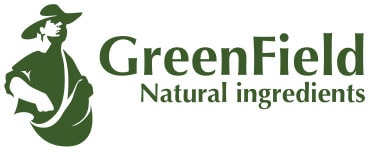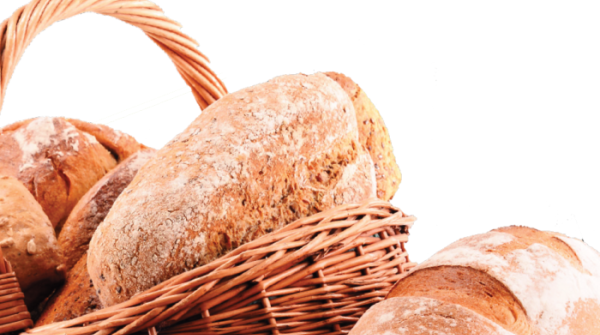Improving the quality of gluten-free bread
The food industry generates huge amounts of waste and by-products, most of which are not used. Some of them may be useful due to their nutritional value and health-promoting properties. An example is seed cake powder – residues after pressing oil from oilseeds. They can be a raw material for various branches of the food industry.
Due to the content of valuable biopolymers and bioactive ingredients, one of the applications of seed cake powders, proposed by scientists from the Institute of Animal Reproduction and Food Research of the Polish Academy of Sciences in Olsztyn and the West Pomeranian University of Technology, could be enrichment of bread for special dietary purposes.
“Gluten-free baking products, compared to conventional bread, are of lower quality due to unsatisfactory texture, poorer taste, reduced nutritional value and short shelf life. The need to improve their quality and enrich them with nutrients prompted us to undertake research on the potential of flaxseed cake, as a natural source of valuable protein, minerals and antioxidants, in the context of improving the qualities of gluten-free bread” – wrote the aforementioned researchers in their latest publication, which appeared in the journal “Molecules”.
“People who, for medically justified reasons (celiac disease, non-celiac gluten intolerance, allergy to wheat or gluten), switch to a gluten-free diet can only eat gluten-free products. The elimination diet is the only effective therapeutic method in this case” – he says in an interview with PAP main author of the study Urszula Krupa-Kozak, PhD, Eng – Consumers on a gluten-free diet have the right to expect that the quality of commercially available gluten-free products, rolls, cookies, etc. will be similar to conventional products. In reality, however, this is not easy to achieve and is a great challenge for food technologists and producers.”
“Younger children diagnosed with a gluten-dependent disease, who have to start therapy and switch to a gluten-free diet, have it a bit easier, because they are not so used to the taste of conventional bread. It’s harder for adult patients who have established eating habits and tastes and are often very disappointed with the taste, texture and even appearance of these products” – she adds.
Elimination of this protein with viscoelastic properties, important in bread production technology, is associated with the need to search for its substitutes. Therefore, ingredients that imitate the characteristics of gluten are often used, which will allow to give the right dough consistency and baking texture: hydrocolloids, gums, emulsifiers” – explains the specialist.
The latest study by a team concerned the use of flax cake to enrich the composition of gluten-free bread. Scientists replaced water (from 25 to 100 percent of its original content) with linseed cake extract. “For years I have been researching, among others, improving the quality of gluten-free baking products. Commercially available ones are often poor in dietary fibre, but excessively sweet and fatty. This has a negative impact on the quality of the diet and the health of this group of consumers. When developing new recipes, I use both naturally gluten-free raw materials and supplements, i.e. prebiotics, minerals, proteins of plant and animal origin” – says the author of the publication.
“Together with Dr. Lukasz Lopusiewicz from the West Pomeranian University of Technology in Szczecin, who deals with research on oilseed cake on a daily basis, we have implemented an idea for innovative gluten-free bread with linseed cake extract. Dr. Lopusiewicz shared his knowledge and experience on the method of obtaining water extract from linseed cake developed in his team. As a result of said extraction, a product resembling linseed milk is formed. And it was this extract, rich in valuable substances, that we used to develop a new formula of gluten-free bread.”
“Together with linseed cake powder, we introduce numerous proteins and polysaccharides into the bread recipe, which are responsible, among others, for the formation of the characteristic mucus. In this case, they give the bread the desired cohesion, porosity, structure- says Dr. Lukasz Lopusiewicz. He explains that the same compounds are also responsible for improving the color of the bread (crust and pulp) and even its aroma. “The aforementioned proteins and polysaccharides react with each other during baking. As a result, compounds are formed that are responsible, among others, for the perception of aroma”. Proportionally to how much water we replaced with oilcake extract, the content of protein and minerals, especially potassium and magnesium, increased. The use of linseed milk had a particularly positive effect on the sensory quality of the bread, which, in our opinion, could enrich the daily diet of consumers of gluten-free bread. Detailed analyzes of the composition of the bread showed that it had not only an increased nutritional profile (it contained more protein and much higher concentrations of important minerals), but also antioxidant properties.
“Together with my team, we have been running a project for several years, in which we try to use the extract (milk) mentioned here for the production of fermented vegan food, i.e. yogurt and kefir or camembert cheese” – he lists.
From rynekzdrowia.pl


